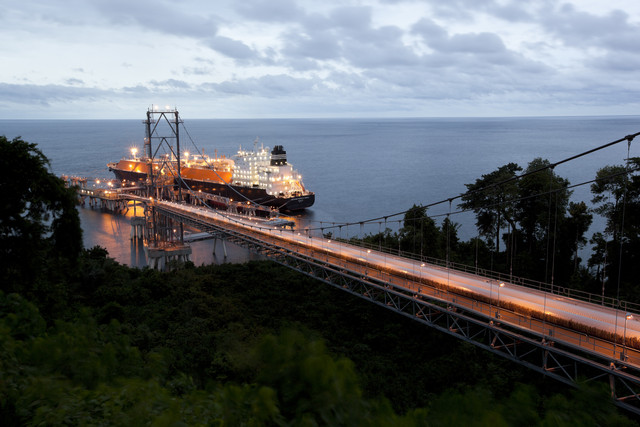
Quebec has officially rejected a proposed LNG export project, citing the International Energy Agency’s (IEA) net zero report from May.
Quebec Minister of the Environment and the Fight against Climate Change (MELCC) Benoit Charette declared at a press conference that the Énergie Saguenay LNG project would not go ahead. The Saguenay-Lac-Saint-Jean facility would have exported 11 million tonnes per year of LNG, using gas from Western Canada.
“We had to face the facts that the risks of the Énergie Saguenay project outweigh its benefits. That is what explains the decision we made,” Charette said.
Charette said the company backing the work, GNL Québec, had not been able to demonstrate it complied with provincial requirements. The project had to show it was helping the energy transition and providing a net reduction of greenhouse gases (GHGs).
Citing an analysis by his ministry, and “reservations and warnings” from the Bureau d’audiences publiques sur l’environnement (BAPE), the minister said the project would not receive environmental authorisation.
Quebec Prime Minister François Legault had once backed the $7 billion LNG plan. He defended the environmental impact of gas, over oil. “We need investment like this in Quebec,” he said in 2019.
Cold welcome
MELCC said that the Saguenay project could slow down the energy transition in those countries offtaking volumes of LNG. Furthermore, the backer could not guarantee that LNG would be used in place of more polluting feedstocks, such as coal or fuel oil.
The ministry also raised concerns about emission from production and transmission, and around offsetting the impact of liquefaction. The project was due to start up in 2026.
Charette went on to say there were other opportunities for the Saguenay-Lac-Saint-Jean region, such as the Élysis green aluminium project. This, he said, will “create jobs while actively participating in the fight of all of Quebec against climate change”.
The minister responsible for the region, Andrée Laforest, said the LNG project had initially provided hope for the local economy.
“However, the circumstances being what they are, this project will not see the light of day. Today, my message is that our government will continue to work hard to attract investors to Saguenay-Lac-Saint-Jean and to create quality jobs. The region retains all its potential and we must continue to be welcoming!”
Carbon accounting
BAPE carried out a public hearing from September to March. The office released a report on the Énergie Saguenay LNG on March 24.
The project would account for 0.8% of Quebec’s emissions target for 2030 and 3.8% in 2050. This would put pressure on various industries in the province, BAPE said, driving up carbon prices.
The Énergie Saguenay LNG plan would “make it more difficult to achieve the targets and objectives of reducing emissions in Quebec”, the report said.
Total emissions from the project would be 45.5mn tpy of CO2, BAPE said. Under the “most realistic” scenario, it would prevent 28.9mn tpy of CO2 around the world. It would also help support, or grow, the oil and gas sector in Western Canada, the report said.
Greenpeace Canada welcomed MELCC’s rejection of Énergie Saguenay LNG. This follows the rejection of the Energy East pipeline in 2017 and a setback for Goldboro LNG this month. “We can finally look forward to a future without new pipelines in la belle province”, the NGO said.
The IEA, in its Net Zero by 2050 report, said that many of the LNG plants currently under construction or planned “were not needed”. LNG trade would fall by 60% between 2020 and 2050, the agency said.
Recommended for you

